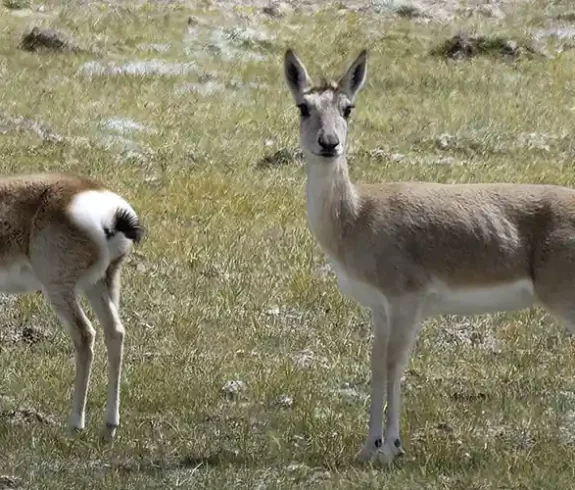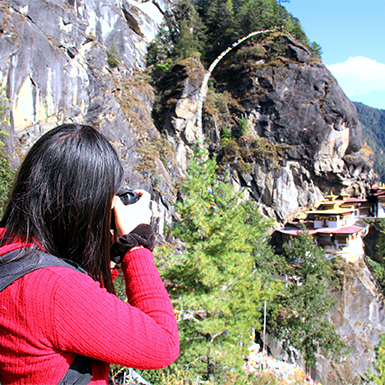The Tibetan Plateau, often dubbed the “Roof of the World,” transcends its majestic title. It’s a land sculpted by extremes, where soaring mountain ranges pierce the heavens and vast, arid plains stretch towards the horizon. This unique geographical tapestry and a harsh climate fosters a surprisingly diverse ecosystem teeming with rare and remarkable flora and fauna. This Tibet Wildlife Guide unveils the wonders of this extraordinary region, exploring the delicate balance of the Tibet ecosystem, the challenges faced by its Tibet animal species, and the ongoing efforts for wildlife conservation in Tibet.
A Crucible of Nature: Forging the Tibetan Ecosystem
The Tibetan Plateau’s extraordinary location and geological makeup significantly influence the Tibet flora and fauna that thrive there. Here’s a closer look at the significant variables affecting this unique ecosystem:
- High Altitude: On average, Tibet’s altitude is 4,500 meters (14,764 feet), with extremely low temperatures and a thin atmosphere. This harsh environment selects resilient species adapted to survive the cold and low oxygen levels.
- Varied Landscape: Tibet has varied scenery, ranging from the snow-capped heights of the Himalayas to the Changtang’s arid plains and the Yarlung Tsangpo River’s verdant valleys. Because of this variation, many plant and animal species can find a myriad of environments.
- Monsoon Influence: The summer monsoon brings seasonal variations in precipitation. While most of Tibet remains arid, the eastern regions experience a brief period of increased rainfall, allowing for the growth of unique plant communities.
A Tapestry of Habitats: Exploring the Diversity of the Tibetan Wildlife
The Tibet Wildlife Guide continues its exploration by delving into the diverse habitats that make up the Tibetan Plateau. Each habitat, shaped by a unique combination of altitude, precipitation, and temperature, fosters a distinct array of Tibet flora and fauna.
1. The Alpine Tundra: A Realm of Cold and High Altitude
- Elevation: Above 4,500 meters (14,764 ft)
- Characteristics: The region is dominated by barren, rocky terrain with minimal vegetation, strong wind, and freezing temperatures.
- Flora: Limited plant life, primarily mosses, lichens, and low-growing herbs adapted to harsh conditions.
- Fauna: A select group of highly specialized animals inhabiting this unforgiving environment. Examples include the majestic snow leopard, an endangered species in Tibet, the elusive Tibetan wild ass (Kiang), and the adaptable Himalayan marmot.
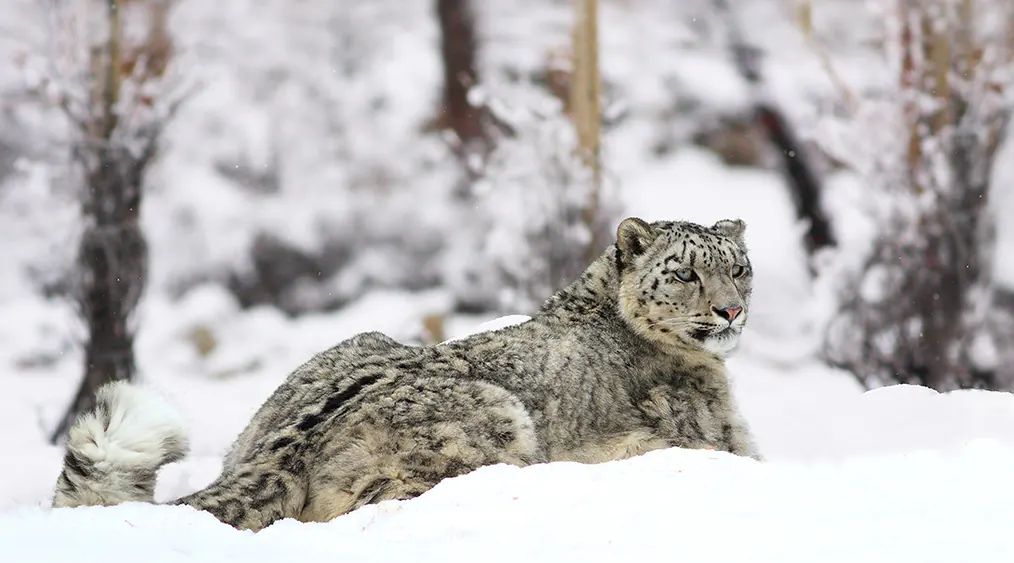
2. The Vast Grasslands: Home to Grazing Herds
- Elevation: 3,500 to 4,500 meters (11,483 to 14,764 ft)
- Characteristics: Rolling grasslands characterize the region, with some shrublands at lower elevations.
- Flora: Dominated by various grasses and wildflowers that flourish during the brief summer months.
- Fauna: Large grazing herbivores such as the Tibetan antelope, the wild yak, and the Tibetan gazelle thrive in these grasslands. Predators such as the Tibetan wolf and the golden eagle prey on them.
3. The Enchanting River Valleys: A Haven of Life
- Elevation: Varied, typically lower than surrounding areas.
- Characteristics: Sheltered valleys with fertile soil receive more precipitation than the surrounding plateau.
- Flora: Supports a broader variety of plant life, including shrubs, wildflowers, and even some trees in specific regions.
- Fauna: The area offers habitat for a broader range of species due to water availability and diverse vegetation. Examples include birds like the Tibetan magpie and the ibisbill, small mammals like the pika and the vole, and larger predators like the red fox.
4. The Arid Steppes: A Land of Extremes
- Elevation: Below 3,500 meters (11,483 ft)
- Characteristics: Dry, desert-like plains with sparse vegetation. Subject to extreme temperature fluctuations.
- Flora: Limited to drought-resistant plants like shrubs and succulents.
- Fauna: Animals adapted to arid conditions, such as the Tibetan sand fox, the Tibetan wild ass, and various reptiles like lizards and snakes.
Celebration of Adaptation in the Tibet Wildlife
The Tibet Wildlife Guide now illuminates the remarkable flora of Tibet that has adapted to thrive in this challenging environment. High altitude presents a harsh reality for plants, with thin air, frigid temperatures, and intense sunlight. However, Tibet boasts a surprising diversity of plant life, each species showcasing unique adaptations for survival.
1. The Resilient Tibetan Rhodiola (Golden Root):
This high-altitude flowering plant, also known as the golden root, exemplifies the remarkable resilience of Tibet flora. It flourishes at elevations exceeding 5,000 meters (16,404 ft) and possesses powerful adaptogenic properties, helping organisms cope with stress. Traditional Tibetan medicine utilizes the golden root for its purported benefits in enhancing energy and stamina.
2. High-Altitude Shrubs: Battling the Elements
Shrubs like the dwarf juniper and the Caragana species are commonplace in the Tibetan landscape. Their stunted growth allows them to conserve heat and withstand strong winds. Additionally, their intricate root systems anchor them firmly in the thin soil, preventing them from being uprooted.
3. Precious Medicinal Herbs: A Legacy of Healing
The Tibetan Plateau is a treasure trove of medicinal plants used for centuries in traditional Tibetan medicine. Some notable examples include:
- Chinese caterpillar fungus: This prized fungus, believed to possess immune-boosting properties, thrives in high-altitude meadows.
- Tibetan rhubarb: People use the roots of this hardy plant for their digestive benefits.
- Fritillaria: Traditional medicine uses the bulbs of this flowering plant to treat respiratory problems.
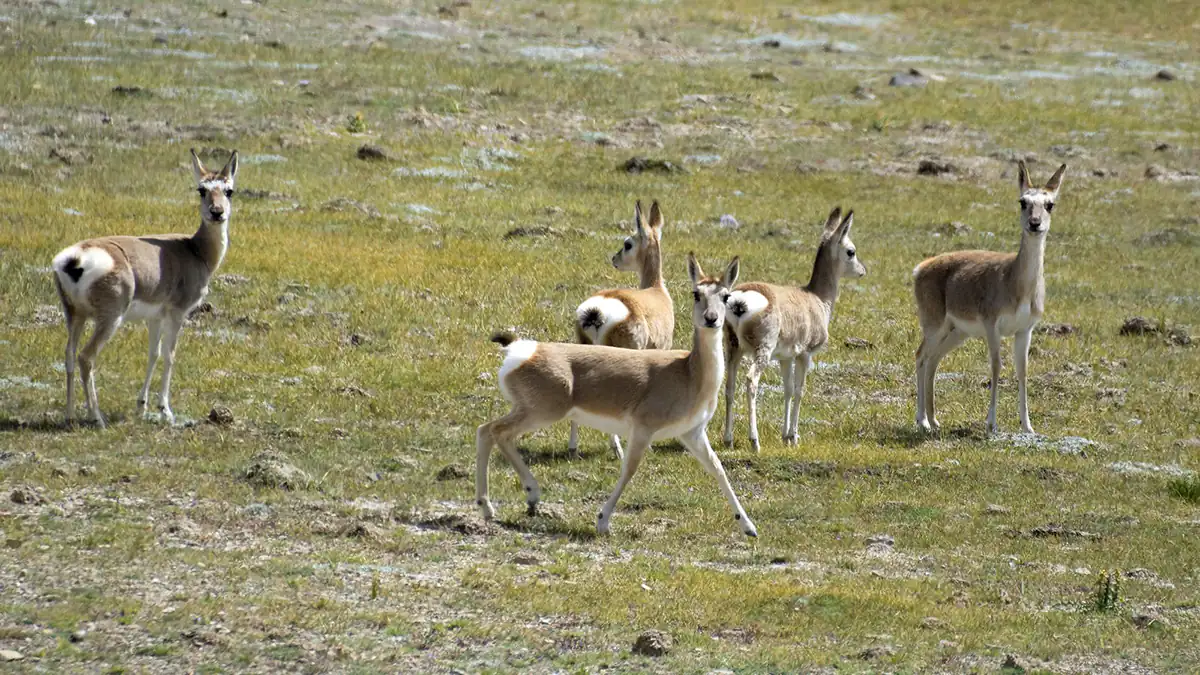
Unveiling the Fauna: Icons of the Tibetan Wildlife Guide
The Tibet Wildlife Guide now explores the captivating realm of Tibetan animal species. This unique area serves as a haven for a wide variety of wildlife, each species essential to maintaining the fragile equilibrium of the ecology in Tibet. Here, we encounter some of the most iconic animals:
1. The Tibetan Antelope (Chiru): A Symbol of Grace and Resilience
Habitat: High-altitude grasslands and plains
Behavior: These animals are known for their impressive migrations, traveling long distances for grazing pastures.
Challenges: The Tibet antelope, sadly an endangered species in Tibet, faces threats from habitat loss due to livestock overgrazing and illegal hunting for its horns. Climate change, disrupting migration patterns and food availability, poses a significant challenge.
2. The Elusive Snow Leopard: King of the High Himalayas
Habitat: Rocky Mountain slopes and alpine meadows
Behavior: Solitary predators with exceptional camouflage, perfectly adapted to their harsh environment.
Challenges: Snow leopards are another endangered species in Tibet. Threats to their survival include competition with wolves for prey and habitat loss from poaching for their body parts and fur.
3. The Wild Yak: A Symbol of Strength and Endurance
Habitat: High-altitude grasslands and rocky slopes
Behavior: These massive herbivores live in herds, grazing on sparse vegetation. They are well-adapted to the cold with thick fur and impressive cold tolerance.
Challenges: While not currently endangered, wild yak populations face threats from competition with domestic yaks for grazing land and potential disease transmission.
4. The Tibetan Wild Ass (Kiang): A Master of the Arid Plains
Habitat: Arid steppes and grasslands
Behavior: These highly social animals live in large herds and remain vigilant against predators.
Challenges: Habitat loss due to overgrazing by livestock and infrastructure development are critical threats to the Tibetan wild ass.
The Fight for Survival: Protecting Endangered Species in the Tibet Wildlife
Unfortunately, the plight of several endangered species in Tibet mars the breathtaking beauty of the Tibetan Plateau. Habitat loss, poaching, and climate change significantly threaten the delicate balance of the Tibet ecosystem. This section of the Tibet Wildlife Guide sheds light on the challenges these vulnerable animals face and the ongoing efforts for wildlife conservation in Tibet.
Endangered Icons of Tibet:
- Tibetan Antelope (Chiru): The Chiru’s majestic horns have fueled illegal hunting, pushing them towards endangerment.
- Snow Leopards: These stealthy predators face threats from habitat degradation brought on by human expansion and poaching for their body parts and fur.
- Asiatic Wild Ass (Kiang): Habitat degradation caused by overgrazing by livestock and infrastructure development threatens the Kiang’s survival.
A Beacon of Hope: Conservation Initiatives in Action
There are causes for hope despite the difficulties. Here are some critical wildlife conservation efforts in Tibet:
- Nature Reserves: The establishment of vast nature reserves, like the Changtang Nature Reserve, provides crucial protected areas for endangered species.
- Anti-Poaching Patrols: Increased patrolling by park rangers and stricter law enforcement measures deter poachers and illegal activities.
- Community Engagement: By actively participating in conservation initiatives, local communities promote a sense of accountability and ownership for safeguarding species.
- Sustainable Practices: Promoting sustainable grazing practices for livestock helps reduce competition with wild herbivores for food resources.
The Road Ahead: Responsible Tourism and Supporting Conservation
Responsible tourists can play a vital role in supporting wildlife conservation in Tibet. It is crucial to choose reputable tour operators committed to sustainable practices and minimizing environmental impact. Additionally, supporting conservation organizations working tirelessly to protect Tibet’s remarkable flora and fauna directly contributes to a brighter future for this irreplaceable ecosystem.
Observing Tibet’s Wildlife in Their Natural Habitat
Seeing Tibet’s wildlife in its native environment is a once-in-a-lifetime opportunity. This Tibet Wildlife Guide is complete with practical advice for responsible wildlife watching.
Prime Time for Wildlife Viewing:
- Spring (April-May): This season coincides with the birding season, offering excellent opportunities to spot migratory birds like the black-necked crane and the Tibetan lark.
- Summer (June-August): Warmer temperatures entice many mammals out of hiding. Look for Tibetan gazelles, argali sheep, and even elusive snow leopards during this time.
Top Locations for Wildlife Observation:
- Changtang Nature Reserve: This vast reserve is a haven for high-altitude wildlife, including Tibetan antelopes, kiangs (wild asses), and Tibetan foxes.
- Lake Namtso: This stunning turquoise lake attracts diverse birdlife, including ducks, geese, and gulls. Look for grazing herds of Tibetan wild yaks, too.
- Jigme Dorji National Park: This park boasts a rich tapestry of ecosystems, making it a prime location to spot animals like red pandas, takins, and even the endangered Bengal tiger.
Responsible Wildlife Watching Tips:
- Respectful Distance: Keep a safe distance from wild animals to avoid upsetting them. Use telephoto lenses or binoculars for an up-close view.
- Minimize Noise: Loud noises can startle animals. Speak softly and avoid sudden movements.
- Stay on Designated Trails: Stick to designated trails to minimize habitat disruption and protect delicate plant life.
- Leave No Trace: Pack out all trash and avoid leaving food scraps behind. Food scraps can attract unwanted predators and disrupt the natural food chain.
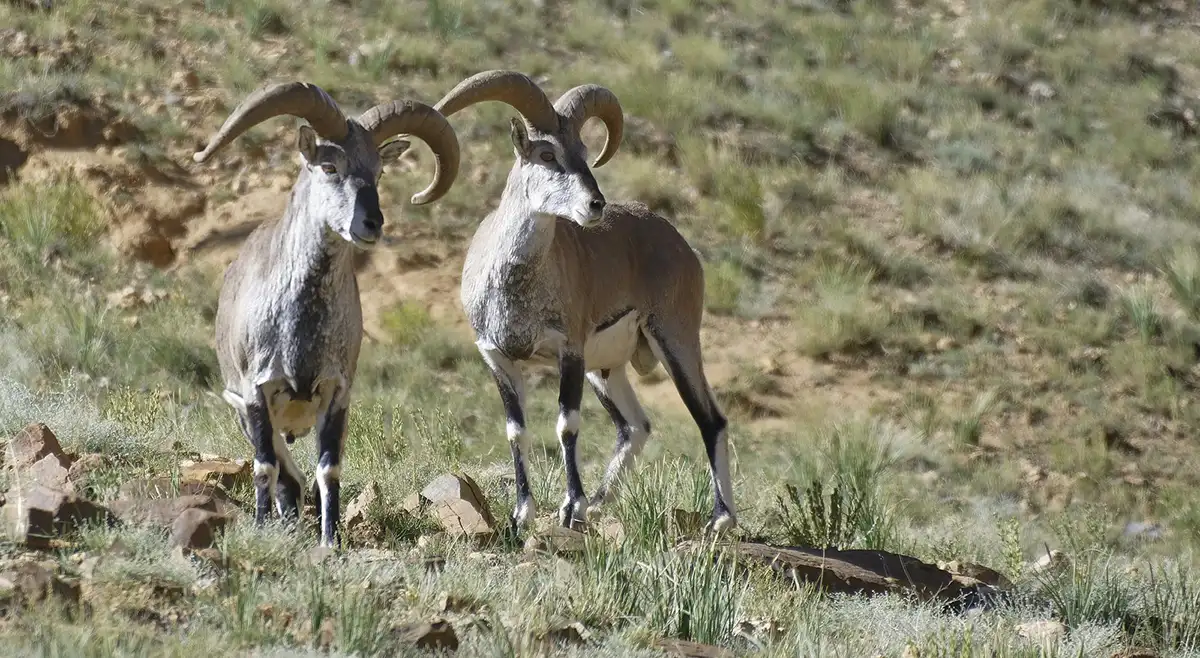
The Vital Role of Local Communities in Conservation
The Tibet ecosystem’s delicate balance relies heavily on indigenous communities’ knowledge and practices. This Tibet Wildlife Guide highlights local communities’ significant role in Wildlife Conservation Tibet efforts.
Indigenous Knowledge and Practices:
Due to their long history of surviving with wildlife, Tibetan tribes have a profound awareness of animal behavior and environmental requirements. This traditional knowledge proves invaluable in conservation efforts.
- Sustainable Grazing Practices: Many communities practice rotational grazing, allowing pastures to recover. This approach helps prevent overgrazing, which can damage plant life and disrupt the food chain for wild animals.
- Respect for Wildlife: Traditional beliefs often emphasize respect for nature and wildlife. This approach fosters a sense of stewardship among local communities.
Community-Led Conservation Initiatives:
Many local communities actively protect Tibet’s wildlife through innovative projects.
- Community Anti-Poaching Patrols: These patrols help deter poachers and protect endangered species.
- Ecotourism Initiatives: Community-run ecotourism ventures provide residents with economic benefits while promoting responsible tourism practices and raising awareness about conservation.
Supporting Conservation Efforts:
Travelers can support conservation efforts in Tibet by:
- Choosing Responsible Tour Operators: Look for companies that partner with local communities and prioritize responsible wildlife viewing practices.
- Supporting Community-Run Ecotourism Projects: Participating in such initiatives directly contributes to conservation efforts and supports local livelihoods.
- Spreading Awareness: Share your knowledge about conserving Tibet’s unique wildlife with friends and family.
Conclusion: A Fragile Ecosystem Worth Protecting
Tibet flora and fauna are captivating sights and vital components of a delicate Tibet ecosystem. The unique plant life sustains herbivores, while predators are crucial in maintaining a healthy balance. This complex web of life underpins the entire ecosystem’s health, influencing everything from air and water quality to soil fertility.
Sadly, some Tibetan animal species face threats due to habitat loss, poaching, and climate change. Endangered species in Tibet include the majestic snow leopard and the awe-inspiring Tibetan antelope. The need for wildlife conservation in Tibet is more critical than ever.
Visiting with a Conservation-Minded Approach
The good news is that responsible travelers can help safeguard Tibet’s wildlife wonders. Following the advice in this Tibet Wildlife Guide ensures your visit has a positive impact.
Choose Responsible Tour Operators: Opt for companies committed to responsible wildlife viewing practices and supporting local communities.
Minimize Your Impact: Respect the environment by sticking to designated trails, avoiding littering, and maintaining a safe distance from wild animals.
Support Conservation Efforts: Consider contributing to conservation organizations or participating in community-run ecotourism projects.
